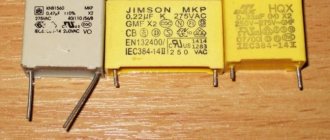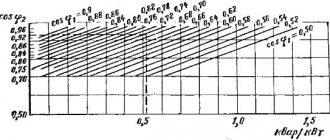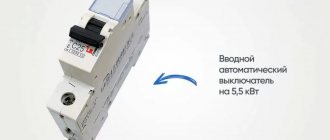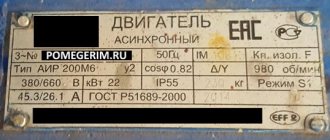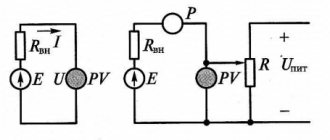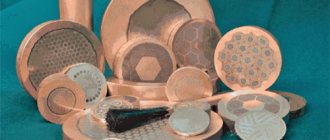A voltage converter from 12 to 220 V is used where there is a need to connect electrical devices that consume standard mains current to an alternating voltage source. In many cases this network may not be available. The use of an autonomous gasoline generator requires compliance with the rules for its maintenance: constant monitoring of the level of working fuel, provision of ventilation. The use of converters in combination with car batteries allows you to solve the problem in an optimal way.
Purpose and principle of operation
What is a voltage converter. This is the name given to an electronic device that changes the magnitude of the input signal. It can be used as a device to increase or decrease its value. The input voltage after conversion can change both its magnitude and frequency. Such devices that change DC voltage (convert it) into an AC output signal are called inverters.
Voltage converters are used both as a stand-alone device that supplies consumers with alternating current energy, and can be included in other products: uninterruptible power supply systems and supplies, devices for increasing direct voltage to the required value.
Inverters are harmonic voltage generators. Using a special control circuit, a DC source is created to periodically switch polarity. As a result, an alternating voltage signal is generated at the output contacts of the device to which the load is connected. Its magnitude (amplitude) and frequency are determined by the elements of the converter circuit.
The control device (controller) sets the source switching frequency and the shape of the output signal, and its amplitude is determined by the elements of the output stage of the circuit. They are designed for the maximum power consumed by the load on the AC circuit.
The controller is also used to regulate the magnitude of the output signal, which is achieved by controlling the duration of the pulses (increasing or decreasing their width). Information about changes in the value of the output signal at the load enters the controller via a feedback circuit, on the basis of which a control signal is generated in it to save the necessary parameters. This technique is called PWM (pulse width modulation) of signals.
In the circuits of power output switches of a 12V voltage converter, powerful composite bipolar transistors, semiconductor thyristors, and field-effect transistors can be used. Controller circuits are implemented on microcircuits, which are ready-to-use devices with the necessary functions (microcontrollers), specially designed for such converters.
The control circuit ensures the sequence of operation of the keys to provide at the inverter output the signal necessary for the normal operation of consumer devices. In addition, the control circuit must ensure the symmetry of the half-waves of the output voltage. This is especially important for circuits that use step-up pulse transformers at the output. For them, the appearance of a constant voltage component, which can appear when symmetry is broken, is unacceptable.
Example
Let's consider a converter that produces 24V at 6A continuous with an input voltage ranging from 8V to 18V.
Let's start by choosing a choke for one phase and a conversion efficiency of no less than 95%. The average inductance current at a minimum input voltage of 8 V Vin_min will be 19 A, but if we add the ripple current, the peak current will already be 25 A. To reduce the current by half, we will choose a two-phase operating mode and a conversion frequency of 250 kHz. Average current I_Lav
it will already be 9.5 A. We will choose PB2020.153 as the inductance from the PB2020 series of chokes from Pulse. For this inductor, the peak current is 10.5 A, which is below the saturation current by a good margin.
Rice. 3. Two-phase boost converter, V0 24V to 6A, Vin 8 to 18V
The average and maximum inductor current will determine the choice of key transistor. The maximum voltage value on the transistor is 25 V. As a key, we will choose NAT2169N with a voltage of 40 V LTC3862 (Linear Technology) as a controller that has built-in MOSFET drivers. We estimate the transistor losses of each phase at 1.6 W at the minimum input voltage. For a 10 A, 40 V rectifier diode, we select a PDS1040 Schottky diode. We estimate the power dissipation on the diodes of each phase as 1.5 W. Both key elements - the transistor and the diode - will require additional space on the circuit board to dissipate heat. The electrical circuit of a two-phase boost converter is shown in Fig. 3, and the timing diagrams are in Fig. 2. In the future, this diagram can be used as a basis for modeling and improvement, if necessary.
Rice. 4. Two-phase synchronous boost converter, Vo 24V at 8.5A, Vin 8 to 18V
Types of converters from 12 to 220 volts
Simple converters from 12 to 220 are designed for low power consumers. The requirements for the quality of the output supply voltage and the signal shape are low. Their classic circuits do not use PWM microcontrollers. A multivibrator assembled on NAND logic elements generates electrical pulses with a repetition rate of 100 Hz. A D flip-flop is used to create an anti-phase signal. It divides the frequency of the master oscillator by 2. An antiphase signal in the form of rectangular pulses is formed at the direct and inverse outputs of the trigger.
This signal, through buffer elements on logic elements, does NOT control the output circuit of the converter, built on key transistors. Their power determines the output power of the inverters.
Transistors can be composite bipolar and field-effect. Halves of the primary winding of the transformer are included in the drain or collector circuits. Its secondary winding is designed for an output voltage of 220 V. Since the trigger divided the frequency of 100 Hz of the multivibrator by 2, the frequency of the output signal will be 50 Hz. This value is necessary to power the vast majority of household electrical and radio equipment.
Push-pull UPS
style=”display:inline-block;width:728px;height:90px” data-ad-client=”ca-pub-5076466341839286″
data-ad-slot=”2660907582″>
♥ Push-pull secondary power supplies are most widespread, although they have a more complex electrical circuit compared to single-cycle ones. They allow you to obtain significantly higher output power with high efficiency.
Circuits of push-pull converter-inverters have three types of connection of key transistors and the primary winding of the output transformer: half-bridge, bridge and with a primary winding tapped from the middle.
♥ Half-bridge circuit for constructing a key cascade. Its feature is the inclusion of the primary winding of the output transformer at the midpoint of the capacitive divider C1 - C2.
♥ The amplitude of the voltage pulses at the emitter-collector transistor transitions T1 and T2 does not exceed Upit the value of the supply voltage. This allows the use of transistors with a maximum voltage Uek up to 400 volts.
At the same time, the voltage on the primary winding of transformer T2 does not exceed the value of Upit/2, because it is removed from the divider C1 - C2 (Upit/2). The control voltage of the opposite polarity is supplied to the bases of key transistors T1 and T2 through transformer Tr1.
♥ In the bridge converter, the capacitive divider (C1 and C2) is replaced by transistors T3 and T4. Transistors in each half-cycle open in pairs diagonally (T1, T4) and (T2, T3).
The voltage at the transitions Uec of closed transistors does not exceed the supply voltage Upit. But the voltage on the primary winding of transformer Tr3 will increase and will be equal to the value of Upit, which increases the efficiency of the converter. The current through the primary winding of transformer Tr3 at the same power, compared to a half-bridge circuit, will be less. Due to the difficulty in setting up the control circuits of transistors T1 - T4, a bridge switching circuit is rarely used.
♥ An inverter circuit with a so-called push-pull output is most preferable in high-power inverter converters. A distinctive feature in this circuit is that the primary winding of the output transformer Tr2 has a terminal from the middle. For each half-cycle of the voltage, one transistor and one half-winding of the transformer alternately operate. ♥ This circuit is characterized by the highest efficiency, low ripple level and low noise emission.
This is achieved by reducing the current in the primary winding and reducing the power dissipation in the key transistors. The pulse voltage amplitude in half of the primary winding Tr2 increases to the value Upit, and the voltage Uek on each transistor reaches the value 2 Upit (self-induction emf + Upit). It is necessary to use transistors with a high value of Ukemax equal to 600 - 700 volts.
The average current through each transistor is equal to half the current consumption from the supply network.
Current or voltage feedback.
♥ A feature of push-pull self-excited circuits is the presence of feedback (Feedback) from the output to the input, in terms of current or voltage.
♥ In the current feedback , the coupling winding w3 of transformer Tr1 is connected in series with the primary winding w1 of output transformer Tr2. The greater the load at the inverter output, the greater the current in the primary winding of Tr2, the greater the feedback and the greater the base current of transistors T1 and T2. If the load is less than the minimum allowable, the feedback current in the w3 winding of transformer Tr1 is insufficient to control the transistors and generate an alternating voltage breaks down.
In other words, when the load is lost, the generator does not work.
♥ In the voltage feedback , the feedback winding w3 of transformer Tr2 is connected through a resistor R to the coupling winding w3 of transformer Tr1. This circuit provides feedback from the output transformer to the input of the control transformer Tr1 and then to the base circuits of transistors T1 and T2. ♥ Voltage feedback weakly depends on the load.
If there is a very large load at the output (short circuit), the voltage on winding w3 of transformer Tr2 decreases and a moment may come when the voltage on the base windings w1 and w2 of transformer Tr1 will not be enough to control the transistors. The generator will stop working. Under certain circumstances, this phenomenon can be used as protection against output short circuit.
♥ In practice, both circuits with feedback feedback in both current and voltage are widely used.
Push-pull inverter circuit with voltage feedback
♥ For example, let's consider the operation of the most common converter-inverter circuit - a half-bridge circuit. The circuit consists of several independent blocks:
- — rectifier unit – converts alternating voltage 220 volts 50 Hz into direct voltage 310 volts;
- — triggering pulse device – generates short voltage pulses to start the autogenerator;
- — alternating voltage generator – converts a direct voltage of 310 volts into a rectangular alternating voltage of high frequency 20 – 100 kHz;
- - rectifier - converts alternating voltage 20 -100 kHz into direct voltage.
Voltage selection
The optimal voltage, as a rule, will be either 12 V or 24 V - if the autonomous power supply is used only in the summer and you do not intend to increase the number of electric generators, then 12 V is sufficient. Otherwise, you should choose 24 V voltage and focus on it when looking for equipment for autonomous power supply. In the calculation example, we will focus on 12 volts.
The required amount of electricity in 24 hours (per day). We divide the previously obtained consumption per day by the selected voltage 9428÷12 and get 786 Ah. Since the efficiency of the inverter cannot be 100% - the device will spend part of the energy on itself - you need to enter these losses into the calculations. We multiply 786 Ah by the “inverter” coefficient of 1.2, the rounded result is 944 Ah.
Three- and four-phase boost converters
Although two-phase converters currently dominate the market, modern controllers allow multi-phase controller block designs where the two boost phases represent a single block. The electrical circuit of a four-phase converter is shown in Fig. 5, and the timing diagram is in Fig. 6. This circuit allows 48 V at 8 A to be drawn from the input when the input voltage is in the range of 12-24 V, and is capable of maintaining an output voltage of 48 V when the input voltage drops to 6 V, with a corresponding reduction in output current.
Rice. 5. Four-phase synchronous boost converter, V0 48V to 8A, Vin 5 to 24V
Rice. 6. Timing diagram of a four-phase boost converter. Ch1–Ch4 voltages at sources Q1–Q4, respectively (50 V/Div)
In this circuit, two-phase controllers are connected to control a four-phase inverter. Controller U1 operates as the master and U2 operates as the slave. U1 generates and U2 receives the clock signal. Controller U1 creates a difference between phase 1 and phase 3 of 90 degrees, but the difference between phase 1 and phase 2, and phase 3 and phase 4 remains 180 degrees. Four-phase boost is easily converted to three-phase by disconnecting the fourth phase at L4 and Q4, and the Phasemode leg of the U1 controller is connected to the 3V8 output of the controller. In this case, all three phases will differ from each other by 120°.




